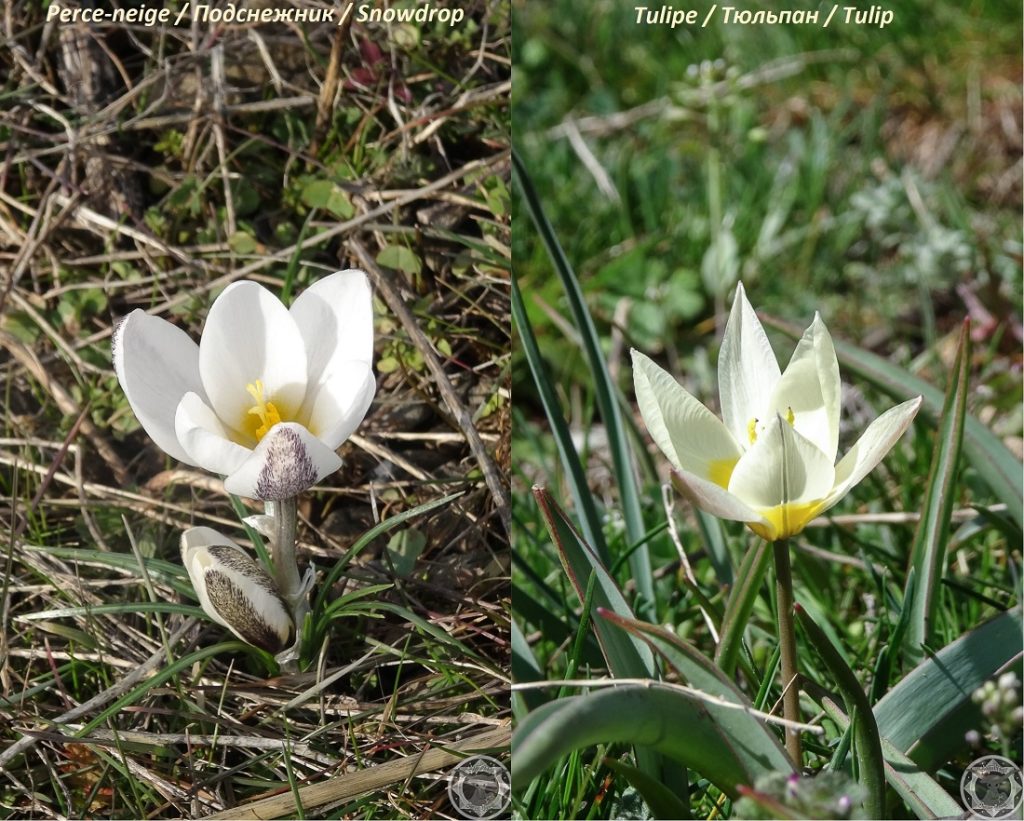In the steppes of Kazakhstan, at low altitude, some species of tulips bloom very early in the spring, even sometimes at the end of the winter. In the south of the country, we can see for example species Tulipa bifloriformis, T. buhseana, T. orthopoda, or T. turkestanica. In rocky areas, these tulips grow immediately after snowdrops (Crocus alatavicus) and in the same places, so they are often confused with these flowers.
Here are some easy-to-see characteristics that can tell the difference between a snowdrop and a tulip of these species.
In order to preserve these flowers, do not pick them!
Enjoy the watching!
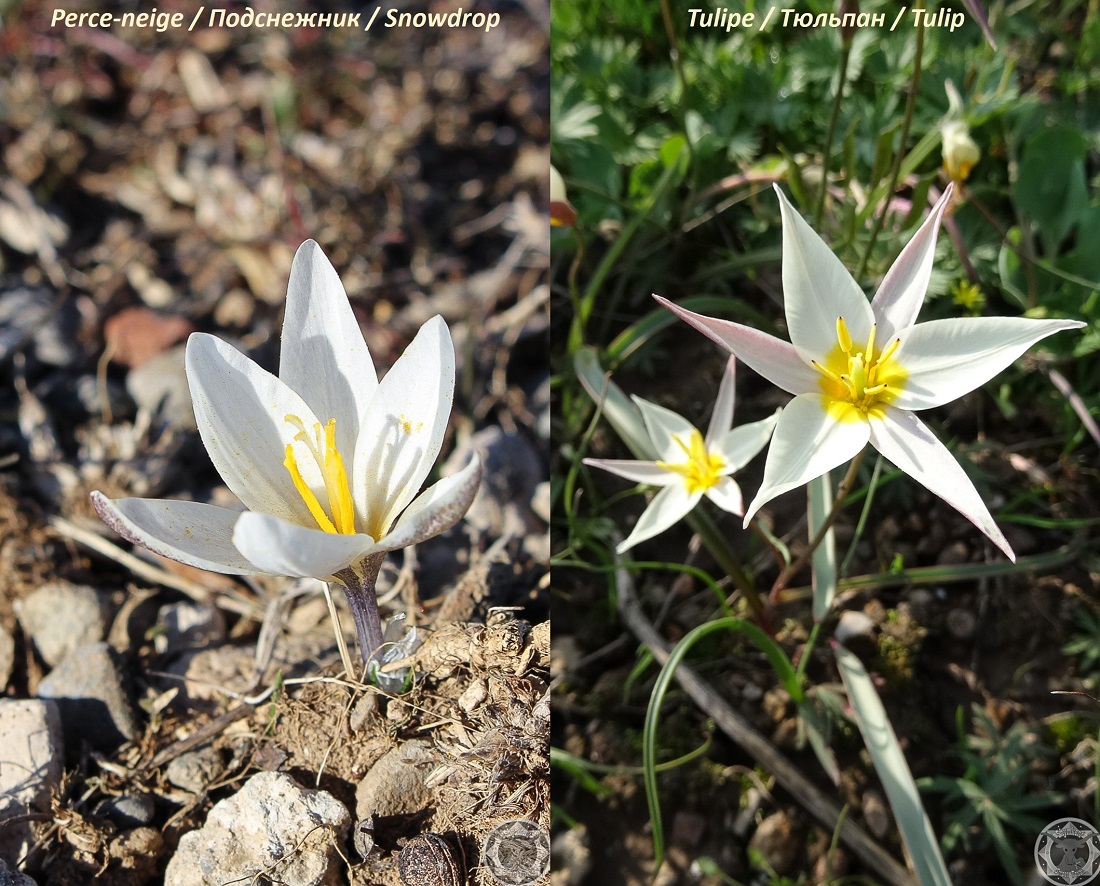
– Bud/Closed flower
Snowdrop: ovoid bud, dark purple outer leaves with small white spots.
Tulip: pointed ovoid bud, solid purple, pink, green, gray or brown outer leaves.
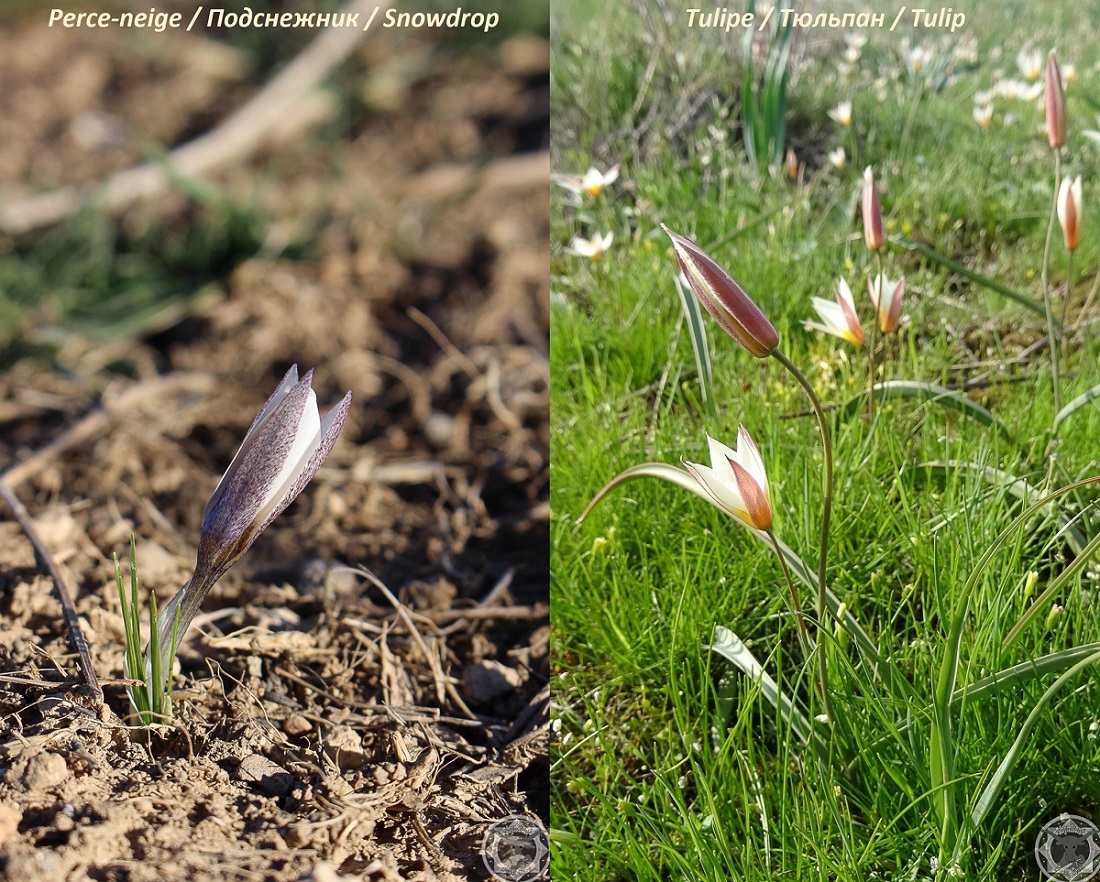
– Leaves
Snowdrop: 8 to 20 thin leaves at the foot of the stem, very short at the start of flowering, then longer than the plant.
Tulip: 2 to 4 thick leaves, at the foot and along the stem, as long or longer than the plant.
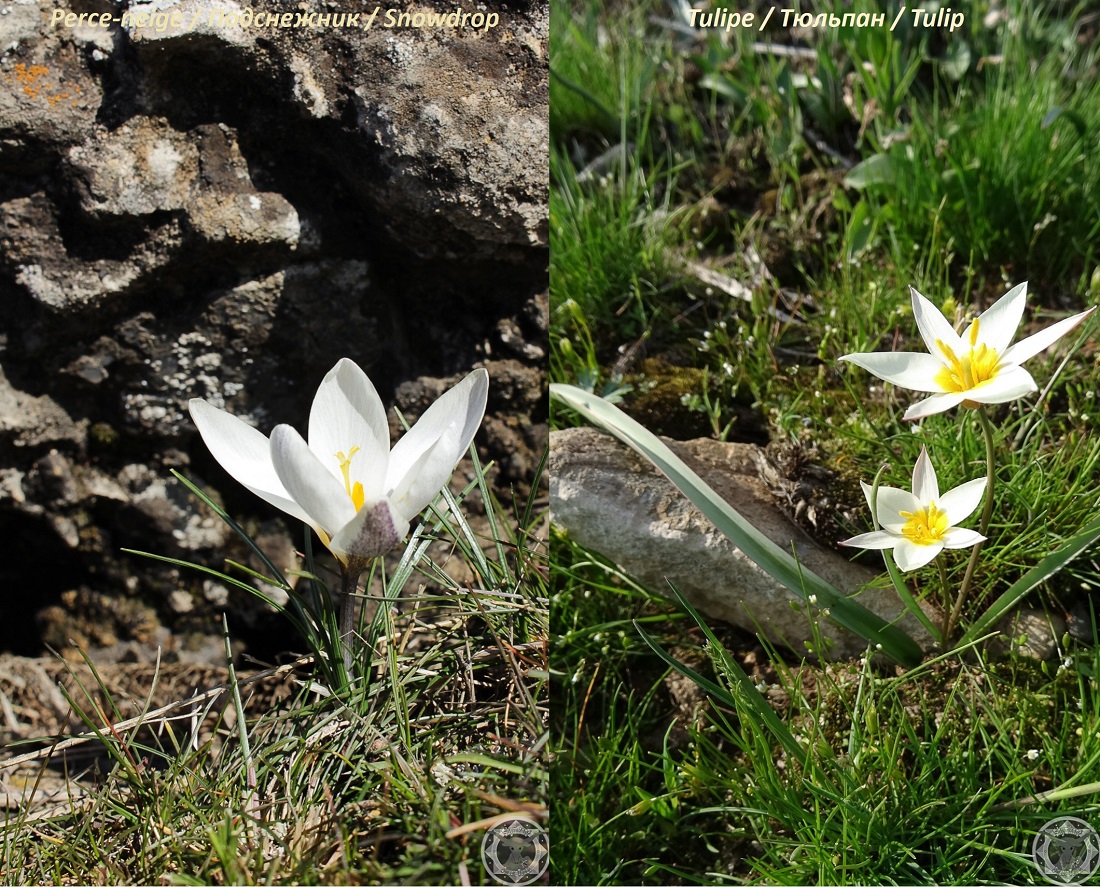
– Flowers
Snowdrop: 3 outer petals, 3 inner petals, rounded ends. Flower white inside with yellow center. 3 stamens.
Tulip: 3 outer petals, 3 inner petals, pointed ends. Flower white inside with yellow center. 6 stamens.
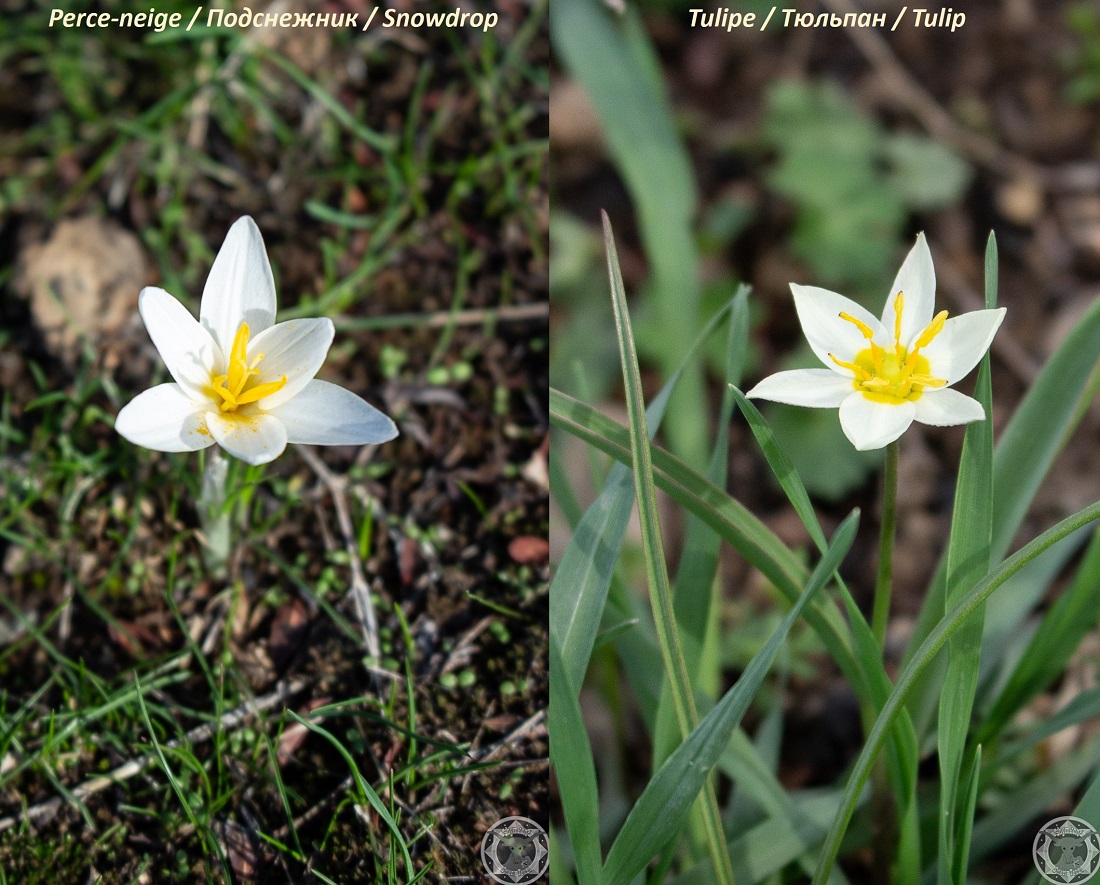
– Size
Snowdrop: height 4-10cm, flower diameter 3-4cm.
Tulip: height 5-40cm, flower diameter 2-4cm.
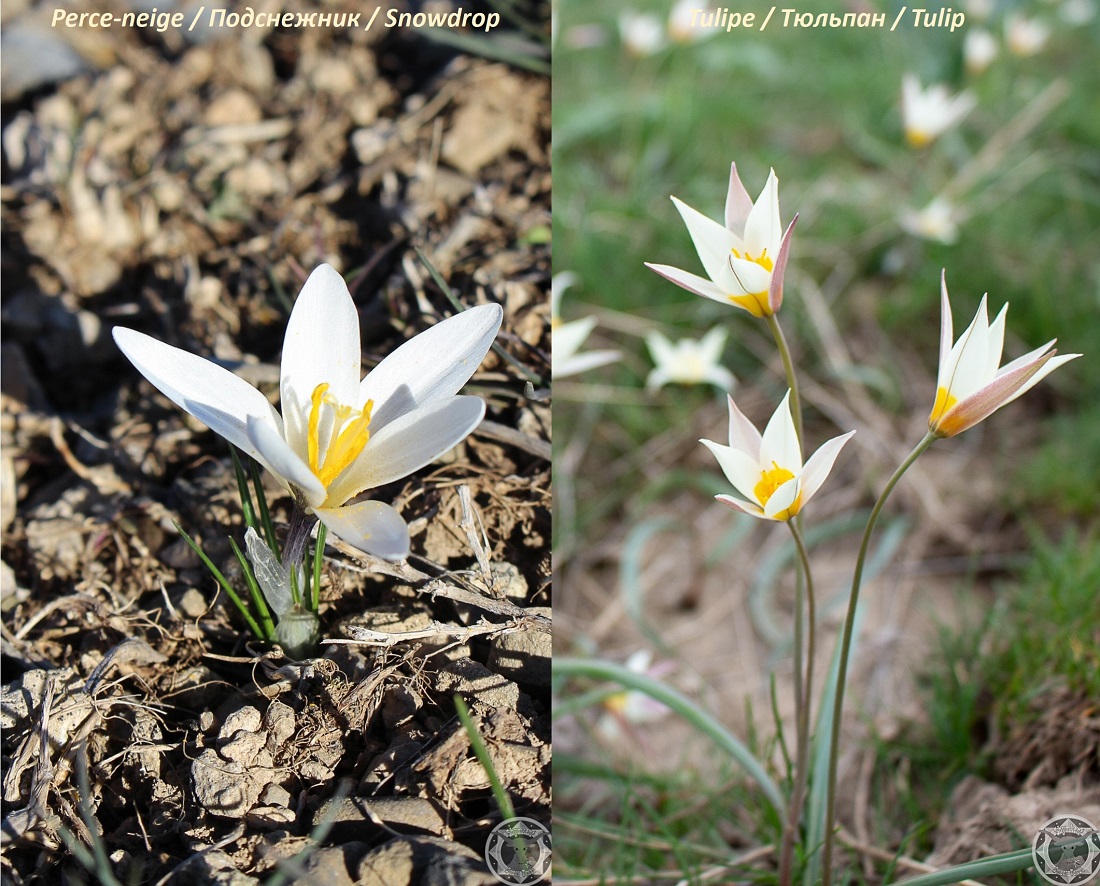
– Stem
Snowdrop: thick, purple in color, with a white sheath at the base.
Tulip: thin, green, pink/red or brown.
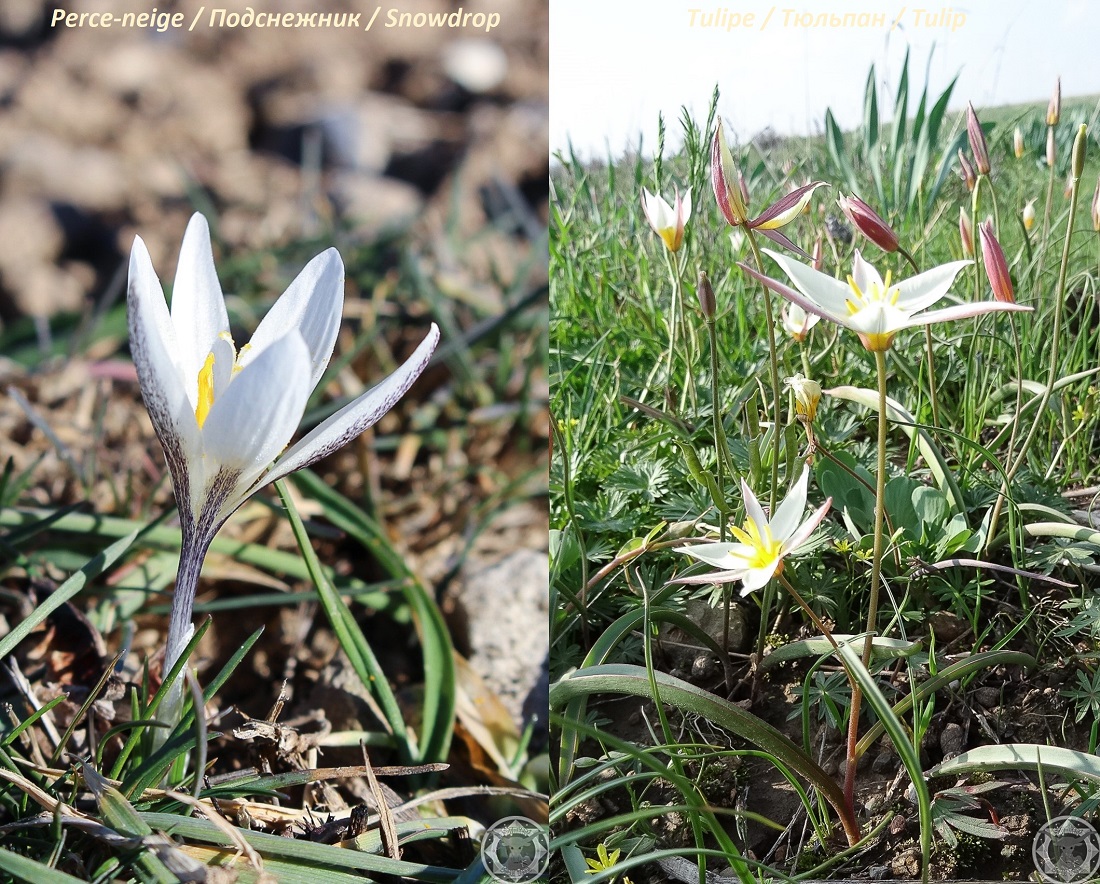
– Number of flowers per plant
Snowdrops: 1 to 10, starting from the base.
Tulip: 1 to 8, at different heights on the stem.
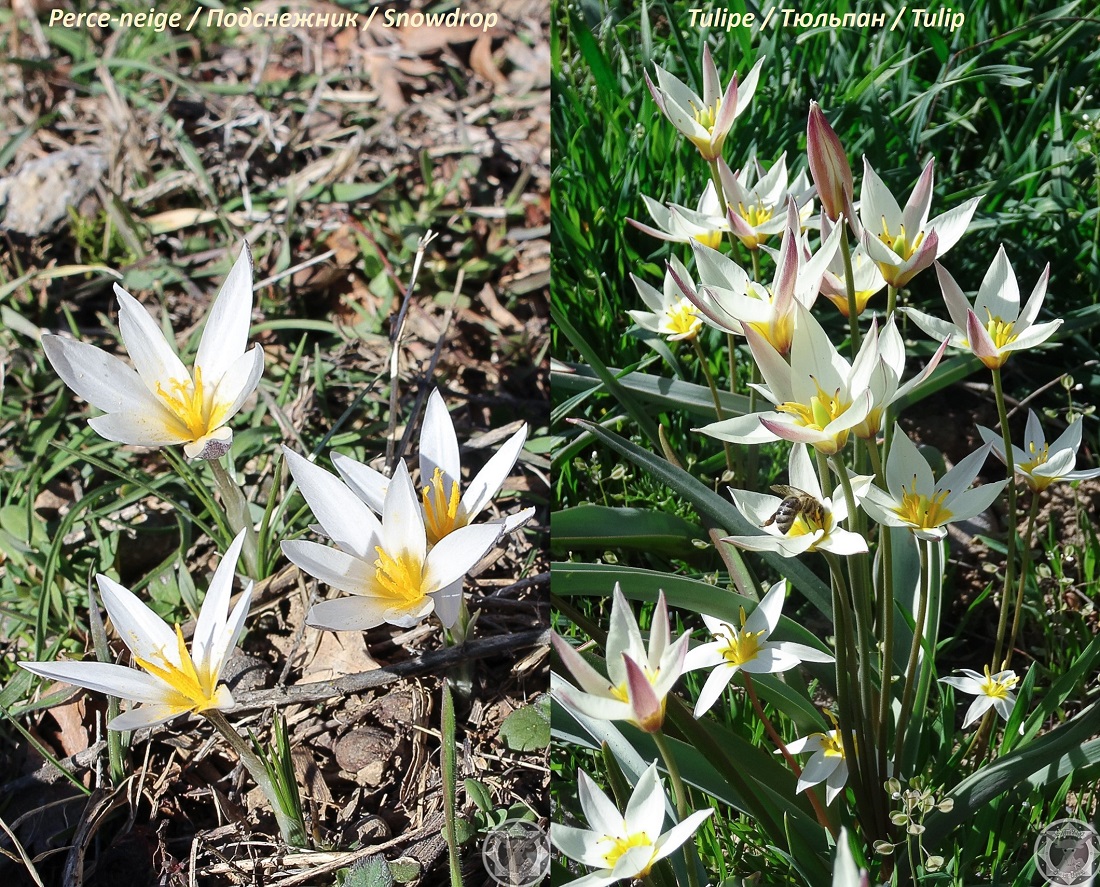
– Snowdrops and tulips can cover large areas, they grow in groups or isolated.
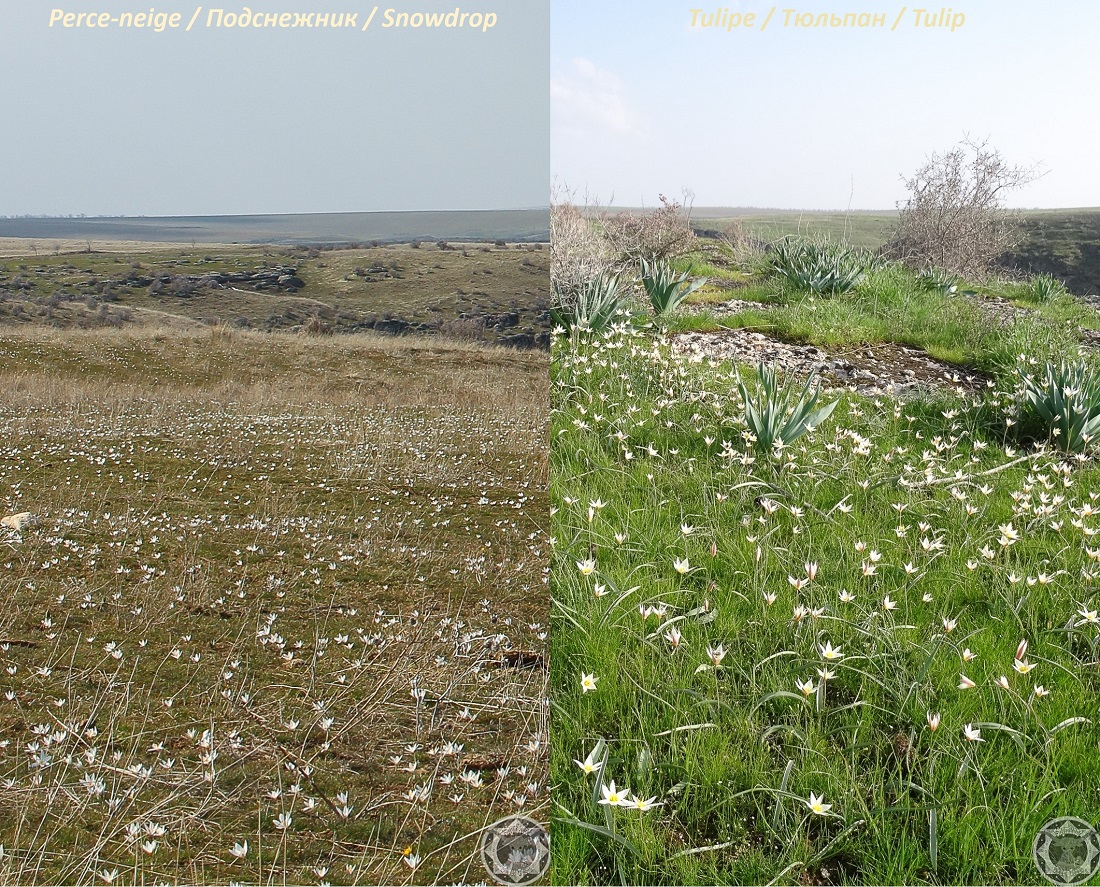
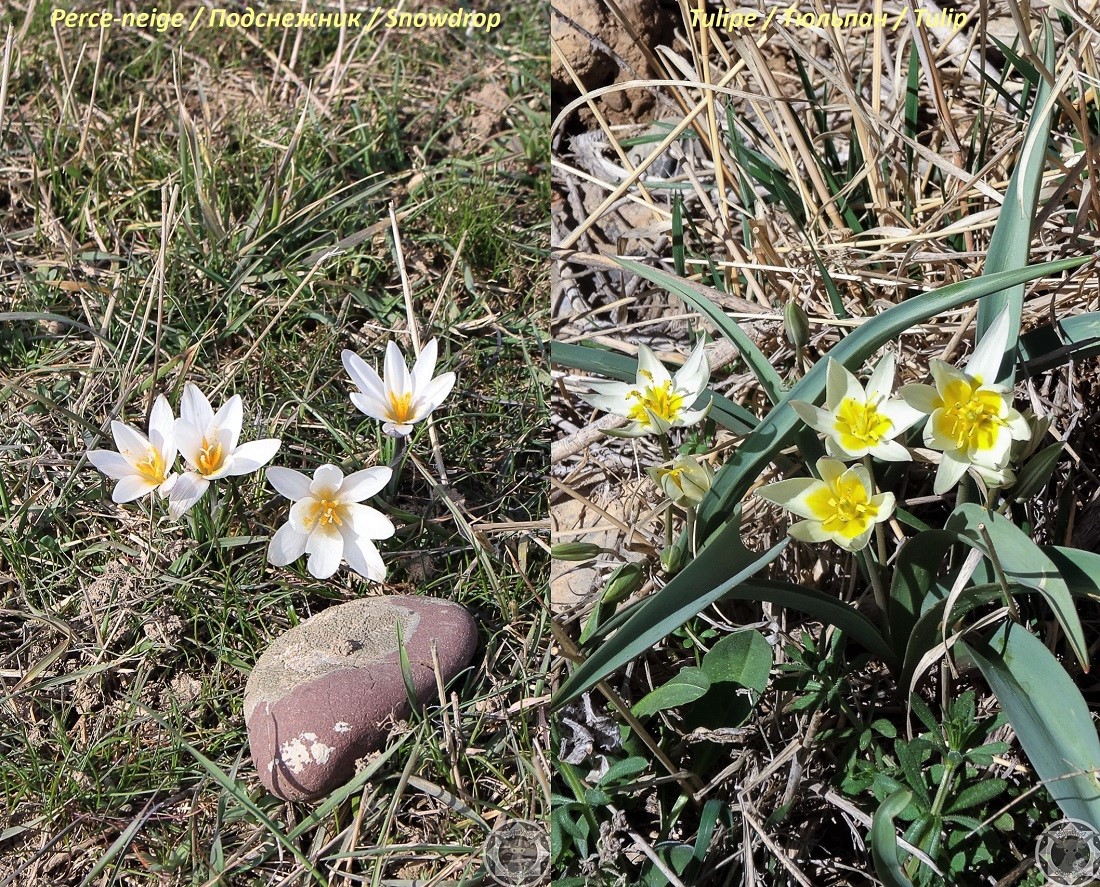
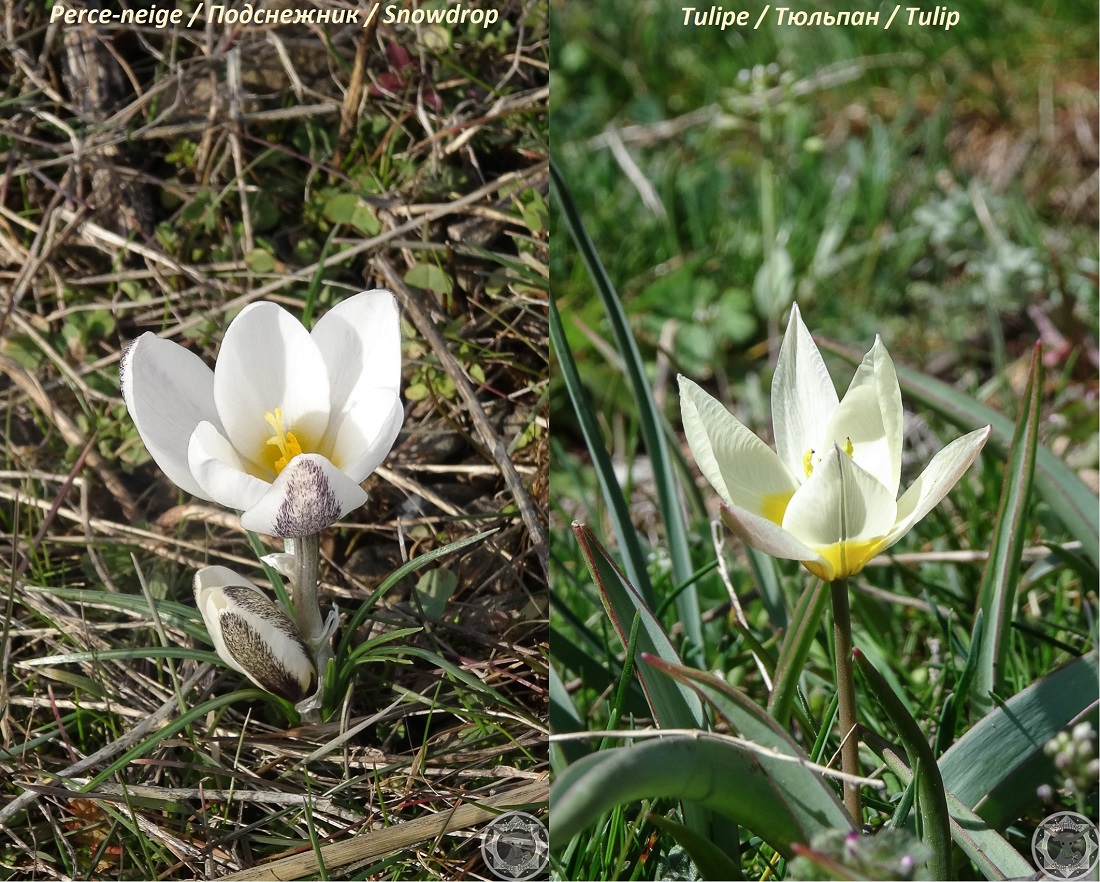
Photos: Gaëlle Bal
